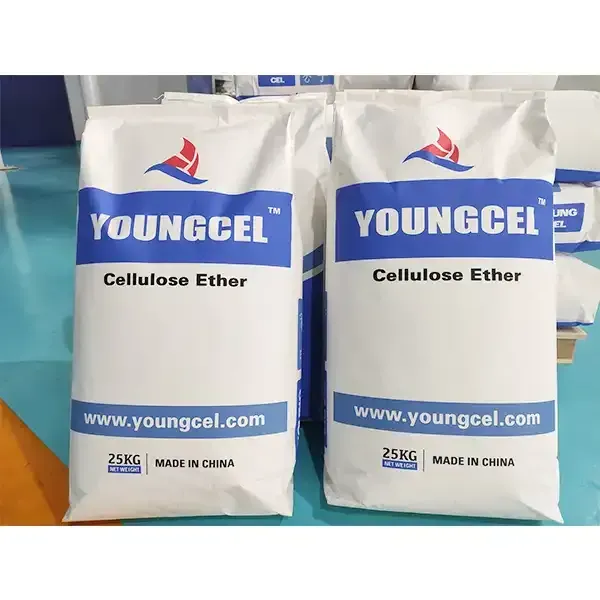Hydroxypropyl Methyl Cellulose (HPMC) Properties, Applications, and Benefits
Hydroxypropyl methyl cellulose (HPMC) is a non-ionic, water-soluble polymer derived from cellulose, a natural polymer obtained from wood pulp and cotton. It is widely recognized for its unique chemical properties and versatile applications across various fields, including pharmaceuticals, food, construction, and personal care products. The significance of HPMC lies in its ability to modify physical properties while maintaining safety and efficacy, making it an essential ingredient in many formulations.
Chemical Structure and Properties
HPMC is characterized by the introduction of hydroxypropyl and methyl groups into the cellulose structure. This modification enhances its solubility in cold water, unlike other cellulose derivatives that require heat. HPMC’s molecular weight can vary, which influences its viscosity and gel-forming capabilities. Additionally, HPMC exhibits excellent film-forming, thickening, and binding properties, making it suitable for a range of applications.
One of the key benefits of HPMC is its biodegradable nature, making it an environmentally friendly choice compared to synthetic polymers. Its non-toxic and hypoallergenic properties further contribute to its popularity in products intended for direct human contact, such as food and pharmaceuticals.
Applications in Pharmaceuticals
In the pharmaceutical industry, HPMC is widely used as an excipient in drug formulations. It serves multiple roles, including a binder, film-coating agent, and controlled-release agent. For instance, HPMC is often utilized in tablet formulations to improve mechanical strength and disintegration time, ensuring that the active pharmaceutical ingredients (APIs) are released at the appropriate rates.
HPMC also plays a crucial role in producing hydrophilic gels, which can encapsulate drugs for sustained release. Furthermore, its properties enable the formulation of ocular products, such as eye drops, where it acts as a viscosity-enhancing agent that helps maintain moisture on the surface of the eye. HPMC’s versatility allows for the development of various dosage forms, including solid, semi-solid, and liquid preparations.
Food Industry Applications
hydroxypropyl methyl cellulose hpmc

In the food industry, HPMC functions as a food additive, classified under E464. It is commonly used as a thickener, emulsifier, and stabilizer in various products such as sauces, dressings, and dairy alternatives. HPMC enhances texture and creaminess in low-fat and fat-free products while maintaining the desired sensory characteristics.
Moreover, HPMC is crucial in gluten-free baked goods, providing the necessary structural integrity and moisture retention that is otherwise lacking in gluten-free flours. By incorporating HPMC, manufacturers can improve the texture, shelf life, and overall quality of gluten-free products, catering to the growing demand for dietary alternatives.
Building and Construction Applications
In the construction sector, HPMC serves as a valuable additive in cement, mortar, and tile adhesives. It enhances the workability and adhesion of these materials while prolonging the open time, allowing for adjustments during application. The water-retaining properties of HPMC prevent premature drying, ensuring that the cement or mortar cures properly and achieves optimal strength.
Moreover, HPMC can improve the mechanical properties of construction materials, contributing to better durability and resistance to cracking. Its ability to form a film enhances the cohesive strength of the mix, leading to superior outcomes in construction projects.
Personal Care and Cosmetics
HPMC finds extensive use in personal care and cosmetic products as well. It serves as a thickener, film former, and stabilizer in lotions, creams, shampoos, and gels. Its skin-friendly profile makes it suitable for sensitive skin formulations, and its thickening properties help improve the texture and application of various cosmetic products.
Conclusion
Hydroxypropyl methyl cellulose (HPMC) is a multifaceted polymer with significant importance across various industries. Its water-soluble properties, biodegradability, and non-toxic nature make it an ideal choice for pharmaceutical, food, construction, and personal care applications. As innovation continues to evolve, HPMC's role as a functional ingredient will likely expand, addressing the growing consumer demand for safe, effective, and environmentally friendly products. Whether enhancing drug delivery systems, improving food quality, or contributing to sustainable building practices, HPMC remains an essential component in modern formulations.
-
A Comprehensive Guide to Methyl Ethyl Hydroxyethyl Cellulose: Applications and Industry InsightsNewsNov.24,2025
-
Understanding Methyl 2 Hydroxyethyl Cellulose: Uses, Benefits & Industry InsightsNewsNov.24,2025
-
Hydroxyethyl Methyl Cellulose HEMC: Industrial Uses, Benefits & Future TrendsNewsNov.23,2025
-
HEMC Cellulose: Versatile & Sustainable Industrial Polymer | YoungcelNewsNov.23,2025
-
Methyl Hydroxyethyl Cellulose: Versatile Building Block for Industry & SustainabilityNewsNov.23,2025
-
CAS 9032 42 2: Understanding Polyvinyl Alcohol's Impact on Industry & SustainabilityNewsNov.22,2025




